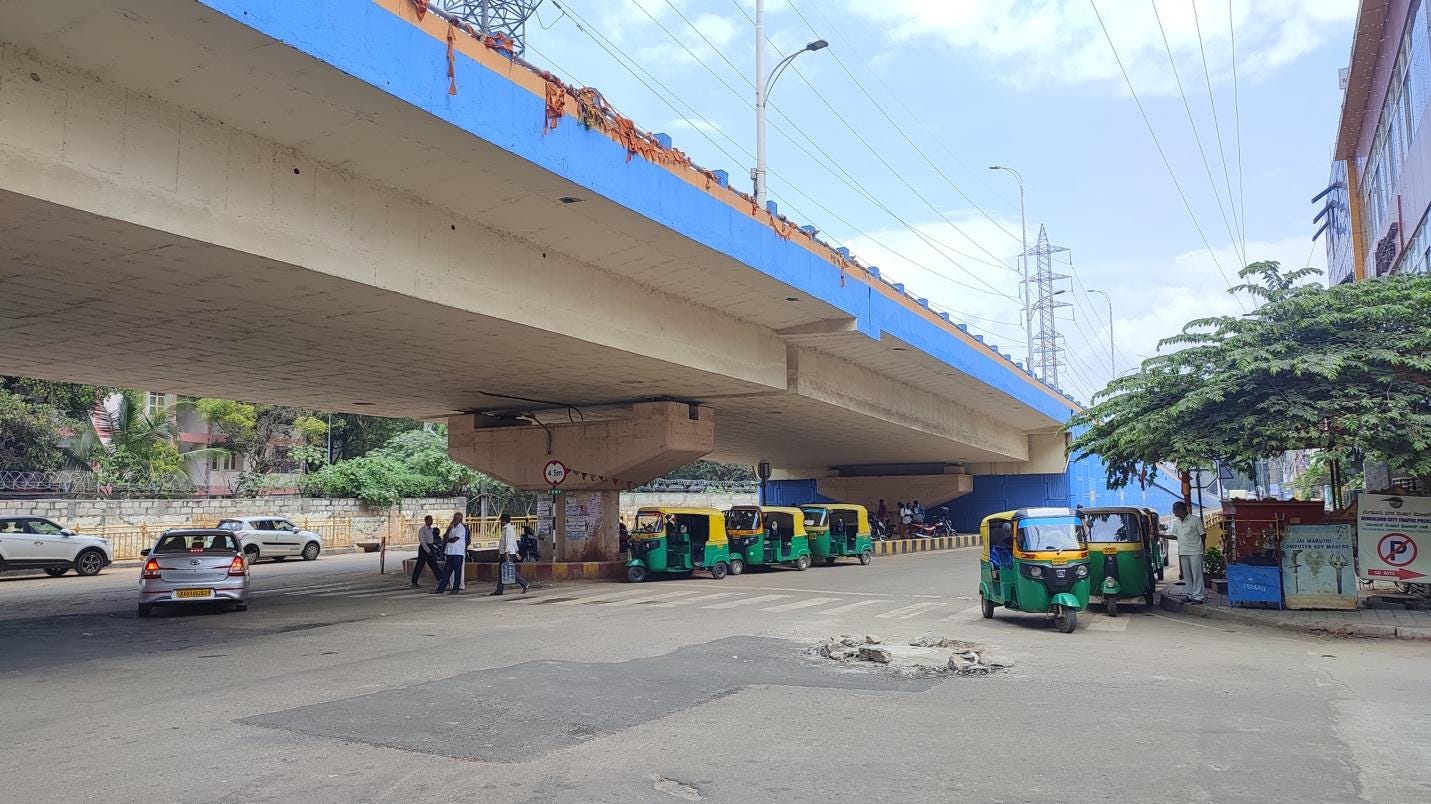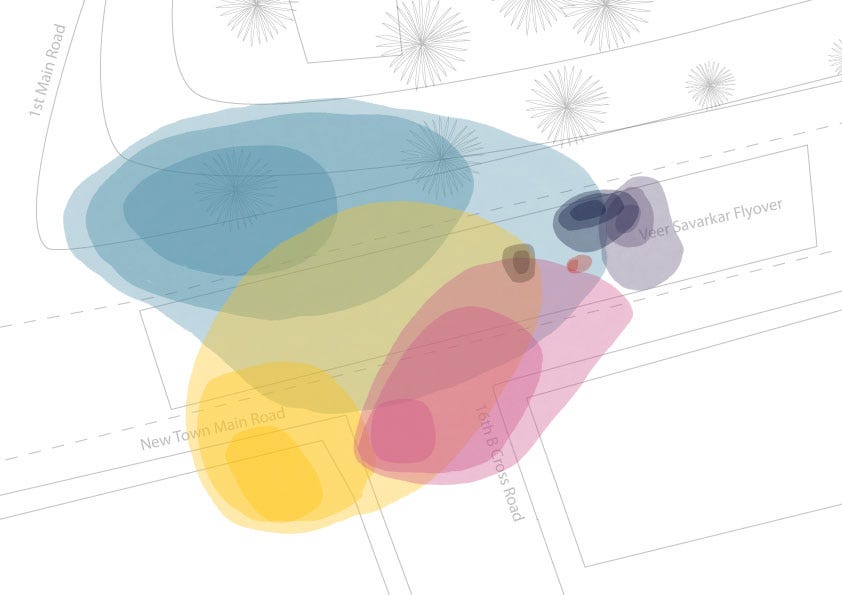Smells of a flyover’s underbelly
On making a map of the 'smellscape' of a parking lot in Yelahanka New Town, Bangalore
Think of your favourite place and imagine yourself standing there. Ask yourself this question – What smells do you imagine in this place?
It’s quite possible that you’ve never associated this place with any smell before. Now, in your imagination, try to eliminate a certain smell from this place. Think of it this way – the smell must have a source. Eliminating the smell invariably means eliminating the source. Would the place be the same without it, i.e. without the smell and its source?
I, for one, know that CTR, without its smell of set dosa and filter coffees, would be stripped of its association with a simple, good breakfast. I also know that Blossoms book house would not feel like the overwhelming abode for book enthusiasts that it is, if not for its comforting, musty smell of second-hand books. Smell is something often paid very little attention to, despite its ability to give space a new dimension of experience.
It’s easy to describe and articulate sensory information collected by the eyes, because we have the vocabulary to describe objects and their relationships. Smells, on the other hand, are much harder to articulate even when identifiable. What several artists and people exploring the sensory resort to therefore, is to visualise them. They make smell maps, from data they collect about different smells, their sources, intensities, and range of their spread. An example of smell maps is Vaasane, made by Bangalore based artist, Indu Anthony. Her smell map is not only a unique guide to the city but is also purchasable as a set of distilled and bottled smells from around the city. Another example of a creative project done on smellscapes is the Hospital Corridor Smellscape by Dr. Kate McLean, an artist, designer, and researcher.
As part of my recent endeavour to study and understand the subject of parking, I decided it would be a worthwhile exercise for me, to make a smell map of a parking lot in Bangalore. The parking lot of my choice was one tucked under the Veer Savarkar flyover in Yelahanka New Town in which at the moment, one can find only two-wheelers parked at any time of the day.
On my first visit to this parking lot, which was at dusk one evening, I was immediately cognizant of 2 smells in particular. One of them was of those emanating from bakeries in the neighbourhood while the second was the smell of pollution from vehicular traffic around.
I looked around to see the source from which the sweet smell of baked goods emanated. What I found was the Aroma Bakery, after which, the bus stop before it had been named, and rightfully so! The scent from the bakery lingered in the parking lot, it followed my every movement and was sometimes subtle yet always distinct. I noted it down, documenting changes in intensity on a scale of 1 to 6 as I walked around.
I noticed a group of men, probably in their mid-50’s, seated on a public bench within the parking lot, chatting away between themselves. I hesitated to go near them, as any nineteen-year-old would, but then reassuring myself of my knowledge of karate, I ventured forth. The first scent that hit me as I drew nearer, was that of paan. It was a strangely sweet smell, strong in intensity with a sharpness I was unfamiliar with. I rated its intensity 6 (the highest on the scale), drawing a small circle on the schematic printed map in my hand.
Putting my nose to use, I smelt the almost pungent smells of dying flesh from a nearby meat shop, the smells of oil, spices and coffee from a south Indian fast food restaurant, Udupi Grand, which I noticed was decked up in preparation for Diwali. I gave these two respective smells scores of 2/6 in intensity. Occasionally I would smell the smell of kerosene as motorbikes and scooters passed by me, many of them swiggy and zomato delivery boys on their way to and fromUdupi. I rated this smell of kerosene a 6/6 in intensity.
Towards the edges of the parking lot, where it was walled in on one side by a huge pillar, I could smell the smell of ammonia in urine as I drew nearer. My nostrils were immediately on high alert and began to pick up other contaminants too, like that of rotting food, stubbed cigarettes and discarded diapers amongst other kinds of garbage. The corners of the lot I found, reeked the most, overpowering my nose with its foul qualities.
Moving back towards the more open and ventilated areas of the lot, I noticed the smell of dampness reaching for my nostrils. It was not the pleasant dampness of morning dew on freshly laid grass but rather the musty, dusty dampness of a cellar long abandoned.
Having exhausted a seldom exercised organ - the nose, I soon retreated back to my fresh and clean smelling home, where I assigned colours to each smell and digitised my map into an accessible and readable document to be published in a magazine!
One of the most important insights that I had in doing this exercise was in realising and reflecting upon the transient nature of smells. The map that is presented below for you, records my personal experience of a parking lot at a single, particular time in history and is only that. It isn't a document one could use to orient themselves to a place for there is no guarantee that anything that has been there today will remain tomorrow.










